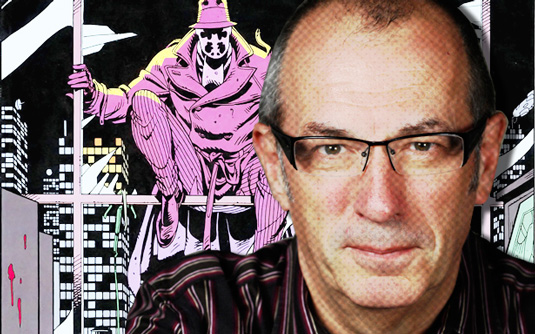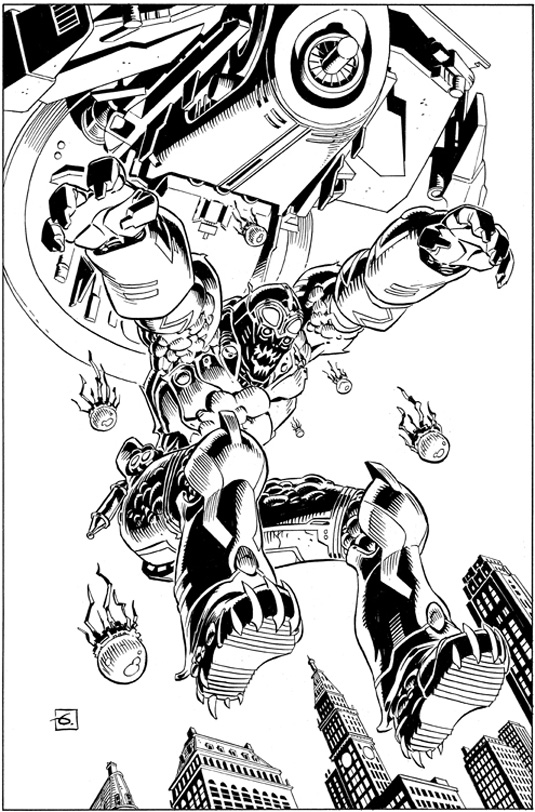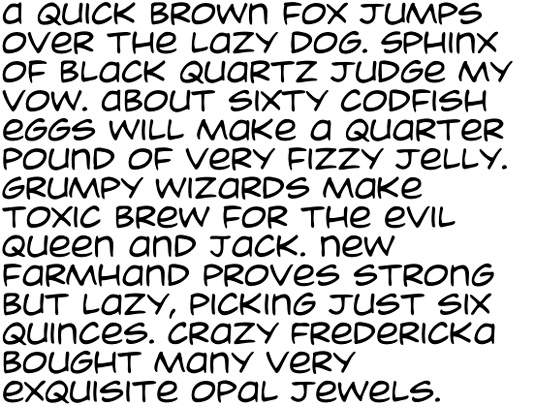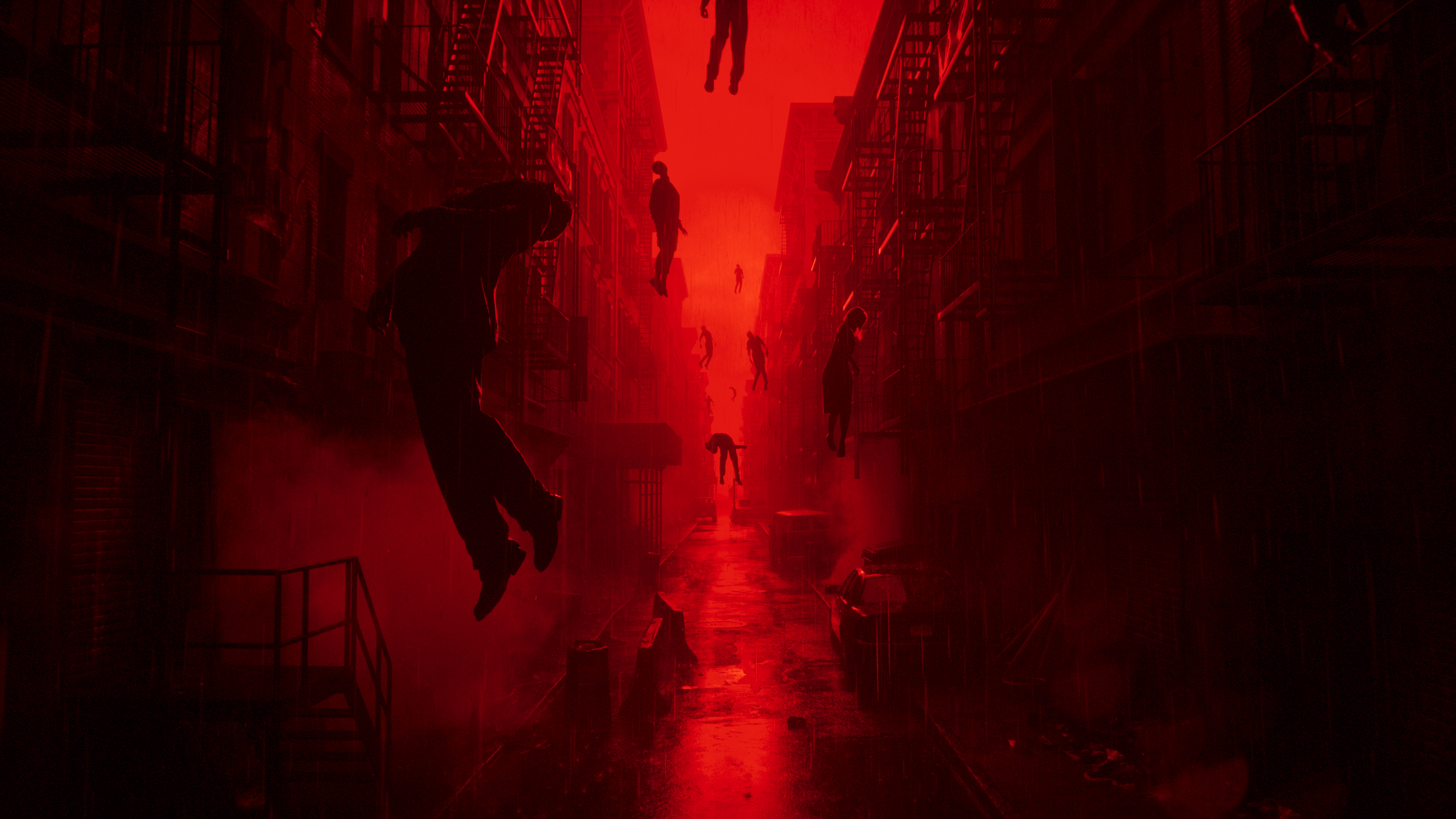INTERVIEW: Watchmen legend Dave Gibbons
Like comics? Then you'll LOVE this awesome in-depth interview with comic book legend Dave Gibbons, in which he reveals everything from his inspirations to what it's like to take a phone call from Stan Lee in your kitchen.

Dave Gibbons is a comic book legend. Fact. One of the most recognised and highly regarded comic creators, Gibbons has spent the last 30 years collaborating with all the major comic book publishers, including 2000AD, DC Comics and Marvel. Although he is best-known for his artwork on the legendary graphic novel Watchmen.
In this exclusive in-depth interview, Gibbons reveals his rise to prominence, why comic books still excite him, and what it's like to work with some of the most talented writers and artists in the world. And we've got the whole thing in audio, too! Excited? So are we!
Check it out...
QUESTION: What inspired you to get into comic book art?
"I always liked the idea of telling stories in pictures, as I always liked to draw when I was a kid and to read as well, particularly comics. I found that if you gave somebody a single picture they'd look at it and go, 'oh yeah, good'. But if you gave them a story that took a minute or two to read it would be a few minutes before they went, 'oh good', and gave it back to you. So I just liked the idea of grabbing people's attention and taking them through a narrative.
I always liked the idea of telling stories in pictures
"I was really inspired by Frank Hampson, Frank Bellamy, Ron Turner and Don Lawrence. What I liked about them was the completeness of their vision. The detail and precision of what they did and how they made the world seem completely real.
"Some of the less impressionistic artists, and the ones with that were a bit more fast and loose with the background, I didn't like as much. The more painterly kind of artist, I found, didn't keep you in the story well enough, whereas those guys certainly did. And that's always been the sort of comic art that I've liked and hopefully the kind of art that I do. It's certainly what I aspire to do."

QUESTION: Tell us about your first encounter with a comic book...
"I used to get nursery comics, Floppy Bunnies and that kind of thing, when I was a little kid. I've only got vague memories and some of those are actually inflated with my memory of my younger sister getting those kinds of comics. I certainly remember seeing the Dandy and the Beano, having a little hoard of those and getting an annual of each every Christmas from the age of about five or six onwards. I learnt to read quite young; I was quite a precocious and intelligent child.
Daily design news, reviews, how-tos and more, as picked by the editors.
"The first American comic book I remember, is when I was in Woolworth’s with my paternal grandfather and him pointing to a Superman comic on the shelf - first one I'd ever seen. He asked me if I wanted it and I said yes, so he bought it for me for six pence. I've still got that comic - that was more years ago than I'd really care to admit, certainly in the mid '50s. I've still got it and I've actually got a much nicer copy of it just for memory's sake.
I think I just fell in love with the idea of Superheroes
"I think I just fell in love with the idea of Superheroes and larger than life adventures. And, of course, the fact that American comics were in colour whereas a lot of the British comics were in black and white, the colour seemed to add a lot to it. So I was just really hooked from then. My maternal grandfather worked in a newsagent with another member of the family and he would send me Superman comics rolled up in little brown paper mailers more or less every week as I remember it. So I was quite well supplied with comic books by my family."

QUESTION: Tell us how you went from copying comicbooks to working on horror and action titles forDC Thomson and IPC...
"I just kept on drawing comics and when I got to secondary school I was sort of the class cartoonist. I had the bug that a lot of adolescent boys had, which was collecting things. So I'd haunt all the local comic book shops trying to make sure that I got the latest issue as they came out and would keep them all together neatly in a box under my bed.
I lost interest in comicsand did what blokes atthat age do - girls,drinking, and scooters
"But then when I got to be about 16 or 17, I lost interest in comics and did the things that most blokes at that age do - girls, drinking, and scooters, as it happened. And it wasn't until a few years later when I found myself dissatisfied with what I was doing as a course of study, which was to be a building surveyor, that I wondered if I could draw comics for a living.
"I made an abortive attempt at doing it. Once I'd qualified as a surveyor, I packed everything in and went to Spain for a few months, came back and decided to be a comic book artist. And I really didn't make it. I had to borrow money from my parents and I really only made enough money to cover my living expenses and pay them back. So I went back to working as a surveyor again and also ghosted for another artist while they were away on holiday so built up a cushion of money and just went from there. That was in the mid '70s and I've been going ever since.
I guess I had a natural innate feeling for telling stories in pictures
"I didn't go to art school; I learnt to draw literally just by copying comics page for page. If you look at my style now, you can see little bits that come from people like Kurt Swan or Wally Wood. I did a bit of life drawing although not anything like as much as I should've. I guess I sort of had a natural innate feeling for telling stories in pictures, which not everyone has got and which has never really been widely taught until recently. There are books about it now but I think it's a very instinctive thing.
"I think my training as a surveyor and my love of structures and things, which I’ve always had, meant that I was always able to construct pictures and perspective which was probably a help. But that was the only relevant education I had.
"Other than to mention that I got into comics by doing balloon lettering. I used to hang around the offices and do the word balloon lettering. In fact I’d first done that helping my dad who used to draw plans as an evening job and he didn’t want it to look like he’d drawn them so he taught me to do the lettering, which, of course, immediately meant that the natural style was perceived as being something other than his. And so I was quite used to doing Indian ink lettering with proper pens, carefully. And that training stood me in good stead."

There's more from Dave on the following page!

The Creative Bloq team is made up of a group of art and design enthusiasts, and has changed and evolved since Creative Bloq began back in 2012. The current website team consists of eight full-time members of staff: Editor Georgia Coggan, Deputy Editor Rosie Hilder, Ecommerce Editor Beren Neale, Senior News Editor Daniel Piper, Editor, Digital Art and 3D Ian Dean, Tech Reviews Editor Erlingur Einarsson, Ecommerce Writer Beth Nicholls and Staff Writer Natalie Fear, as well as a roster of freelancers from around the world. The ImagineFX magazine team also pitch in, ensuring that content from leading digital art publication ImagineFX is represented on Creative Bloq.
